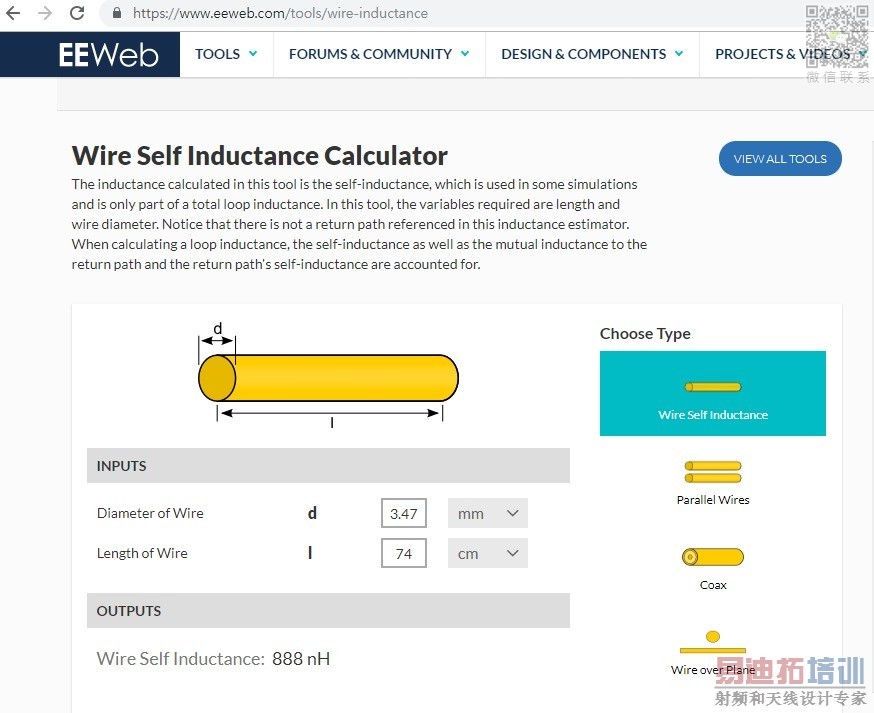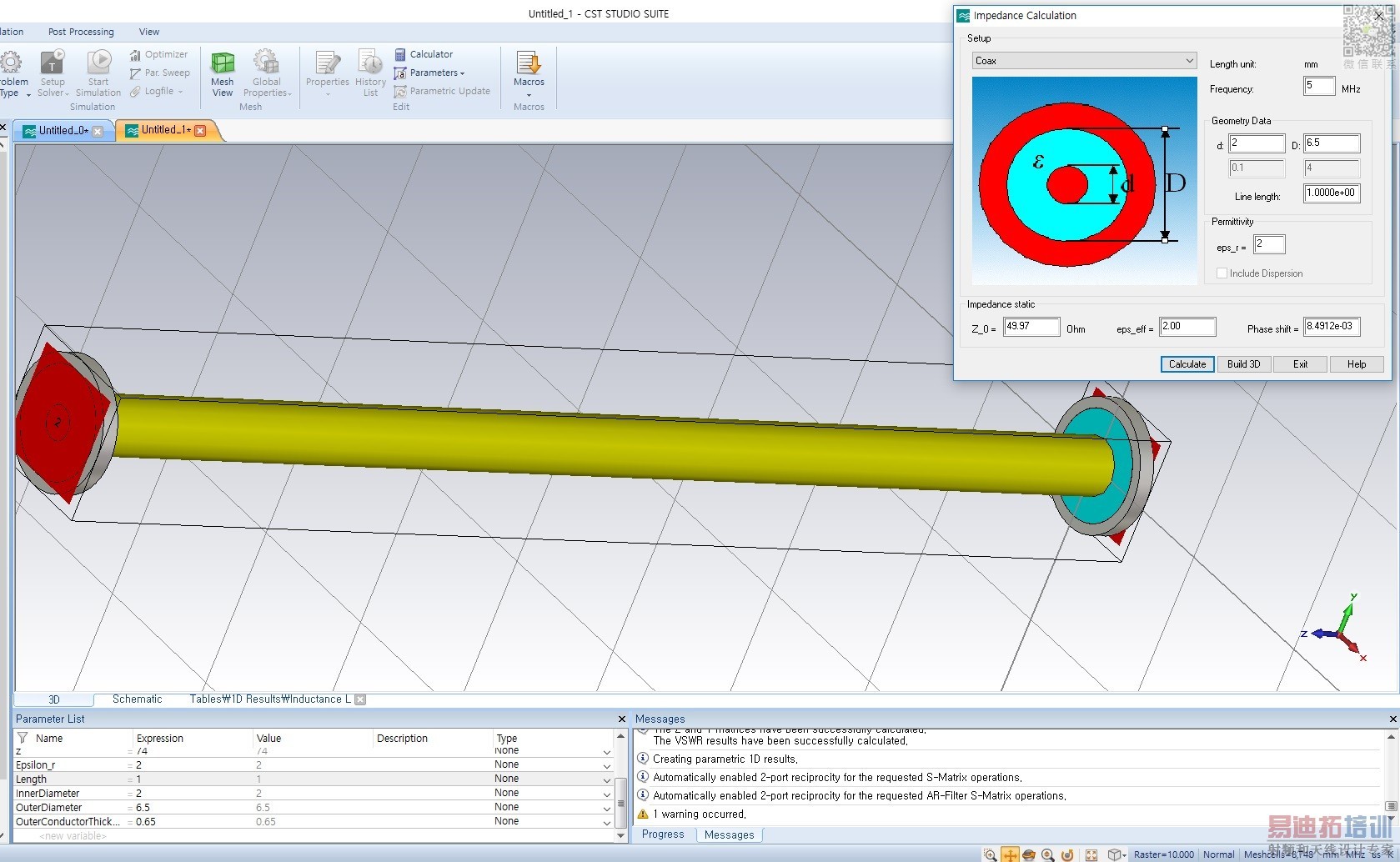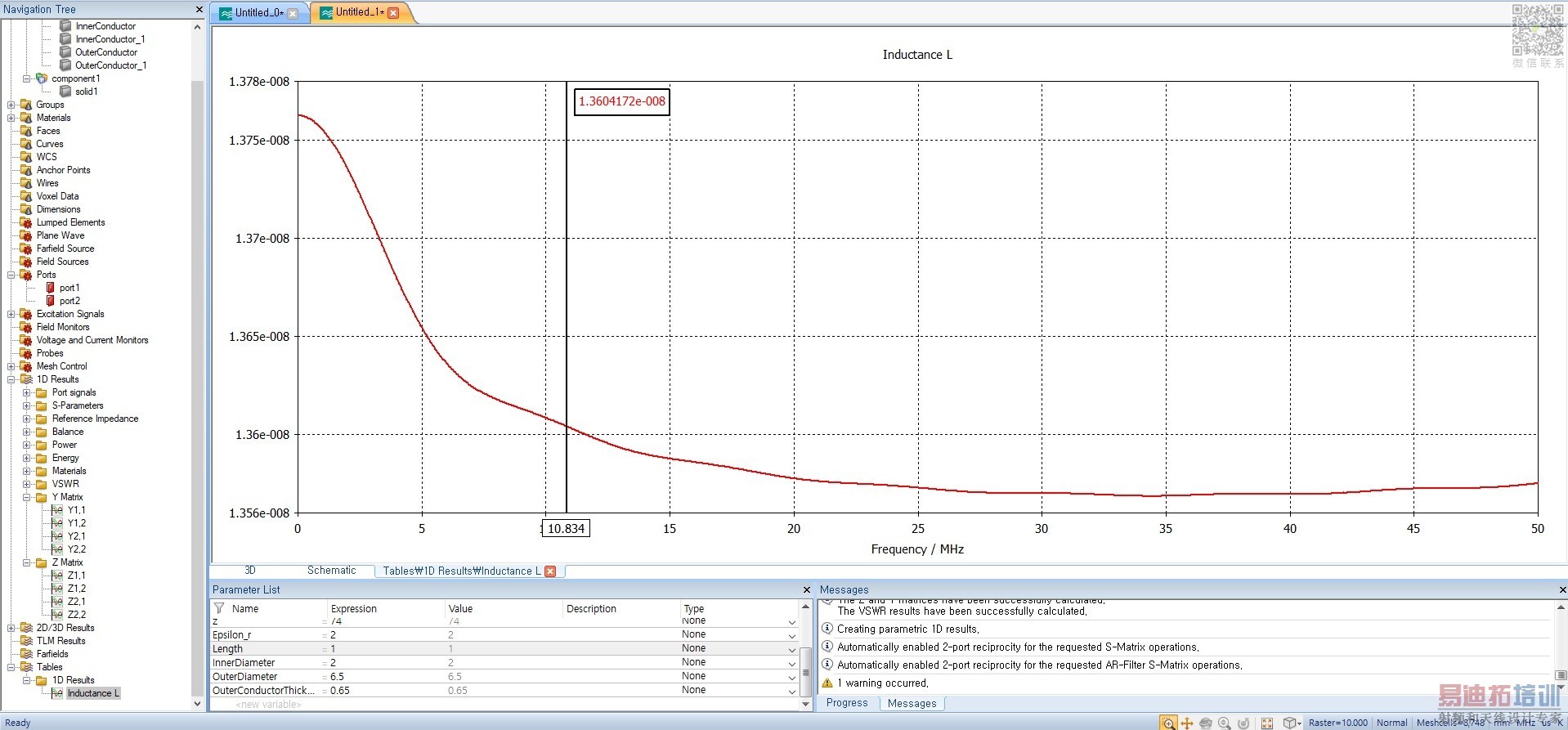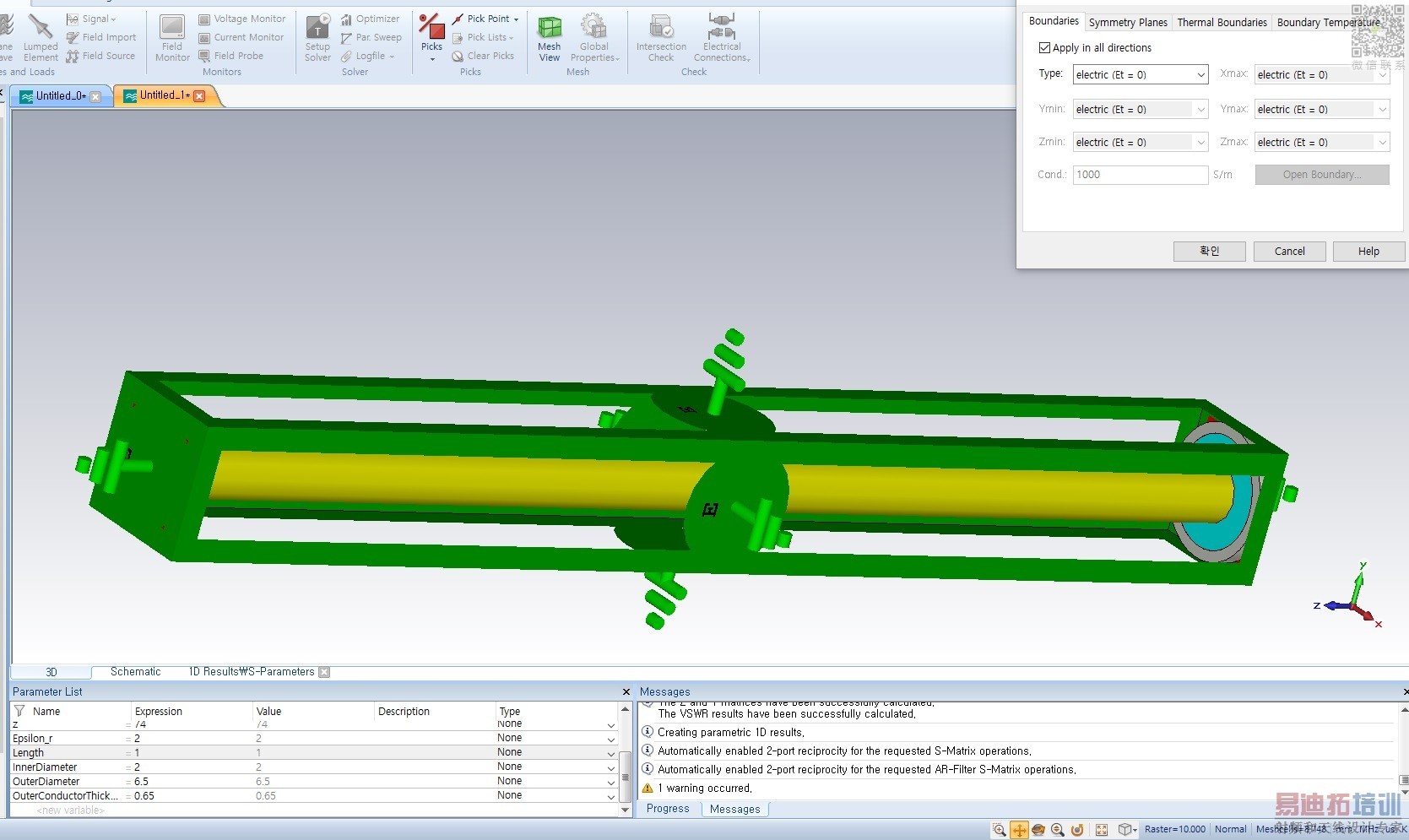value error self inductance simulation in CST
Theoretical value, actual measurement, simulation value of inductance
I'd like to compare three in total.
The theoretical values and actual measurements are similar, but only the cst simulation values are different
and I don't know what went wrong.
diameter of inductor is 3.47mm length is 74mm
Ports were implemented by calculating them with impedance calculators.



This is a common issue in simulating inductance of a single conductr: If you measure inductance, you need to think about the return path also. Current flows in closed loops only. What you measure is the total effect of both conductors. And to make it more complicated, there is coupling between signal and return path, so that distance between signal and return conductor (here: boundary) matters.
In your CST model, return current will flow through the boundary back from port 2 to port 1, and this physical path adds inductance. This current flows through the boundary condition, which is included but not shown in your model. With a small distance to the metal boundary, you distort the magnetic fields of the signal conductor. With a large distance to the metal boundary, the return path though the boundary is even longer -> more effect on total inductance.
It looks like a trivial simulation problem, but it is not!
Besides the trivial return path problem, I don't understand what's measured and simulated here, the pictures are showing both single wire and coaxial topology.
Ah, because the current flows through the boundary condition, is it calculated by the length that it contains?
The boundary conditions are as follows:

How do I deal with this?
single wire is Inductance .
and coaxial is Port.
The end co-axial is the port to give the waveguide source.
Yes, your CST model is very different from the ideal single wire. The issue is what I described. There is no solution, you cannot measure a single wire without return.
Let me ask you a question.
Do you think if you put one port on this conductor and the other side on the regular conductor, the result will be the same?
What is "the regular conductor"?
Single wire inductance is an abstracted quantity like capacitance of a sphere that can't be measured directly. Why don't you refer to a setup that can be consistently modelled and measured, e.g. a wire pair or coaxial line?





